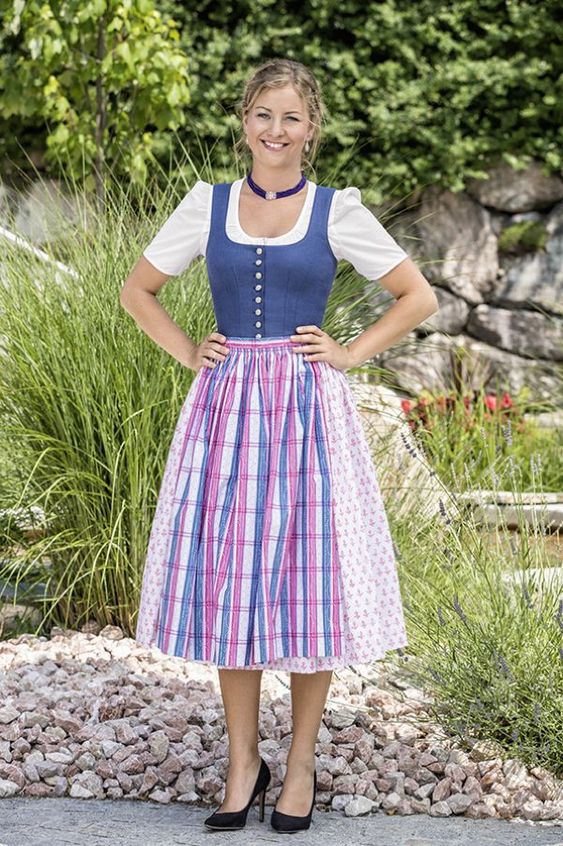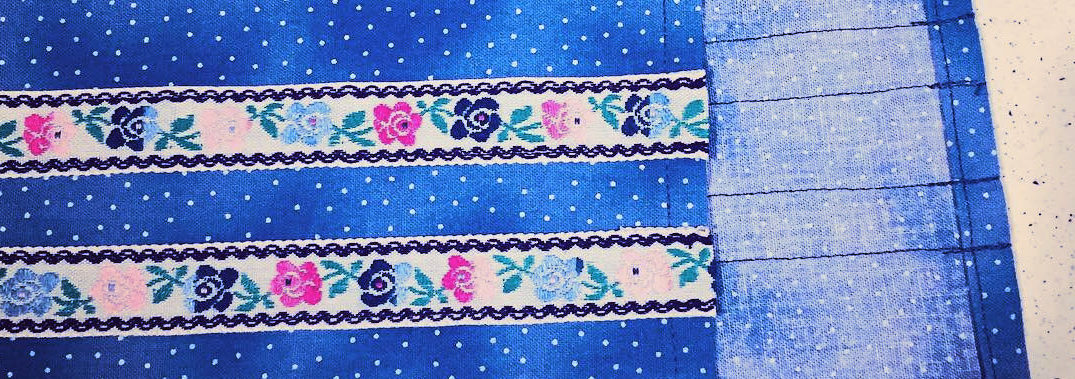This post was first published on the Historical Sewing blog in March 2018.
The classic folkwear dress of southern Germany and Austria is not a new one to me. The Trachten and Lederhosen are lovely ensembles with a patriotic (and varied) heritage. Yet recently I’m finding the women’s dirndl – the fashion Tracht – popping up more in my path.
Maybe it’s just me wanting to find “my style” for everyday wear.
My friend, Lauren of Wearing History had mentioned this around the first of January – wanting to have clothes that are joyful, that make her feel great in her daily dressing.
Have you been there? Tired of your closet and desiring to dress in more that makes you happy on a regular basis not just a couple times a month? Yeah, me too. (Tip: after reading this post go listen to my podcast episode on the new #historybounding theme.)
I don’t wear historical fashions often – a few times a year and including the full weekend of Costume College. I admire greatly those that dress in historical more often (weekly and daily even).

But I don’t see myself in my 1880 Vanilla Dressing Gown to chase a toddler each day. I like my corsets and petticoat but can’t bring myself to try and wear them so often.
Then last week the dirndl promptly came across my feed (or was it the brain) again.
So I googled….
OH MY GOODNESS!!
A new Pinterest board started. A deep fall down the rabbit hole. Staying up way too late ooh-ing and ahh-ing and dreaming.

Among other sites, I landed on Gertie’s blog posts about her sudden love of dirndls in 2015 and the wearing of them. (Many from the Bavaria and Austrian areas will debate just when dirndl should be worn and when not.)

The classic dirndl ensemble is a bodice with full skirt attached – it’s basically what we call a jumper. The skirt lands somewhere just below the knee (midi) to just above the ankle. Think 1950s fashionable lengths. I’ve read the shorter length is what the younger women prefer.

On top is a pleated apron that ties to the front or back. Those “in the know” say the apron is what sets the dirndl apart from other dresses and jumpers. The bow to the left, center and right all mean something. The back ties are for widows, waitresses, and perhaps anyone (from my research).


The white cropped blouse under the bodice is traditional and is short to give a smooth, fitted look around the waist. The sleeves are generally short but really can be most anything in a modern dirndl. There’s short straight, short puffed (with varying degrees of puffiness), elbow length with or without flared cuff, and long to the wrist.
I’m told the blouse is usually white, but you’ll see black in the Alpine areas. I’ve even seen some modern blouses in prints.

Jackets in wool are common for cooler weather. Adorable, practical and comfy in single breasted with round or shallow-V neck line. (I’ve even come across some of these jackets in knitted form… oh dear. Time to combine my obsessions.)
The front of the low-cut bodices can be closed with buttons, lacing, invisible zipper or decorative lacing over a zip.

So, after more than a few hours of scanning dozens of images and getting more inspired with each one, I’ve decided why the dirndl style calls to me so strongly. Maybe some of these traits will resonate with you – as fellow historical costumers – and you find yourself drawn to the dirndl style.
Why the Love of Dirndls (not in any particular order of greatness):
- Fitted bodice. This comes from our love of fitted Victorian bodices. And the dirndl bodice is/can be made with a flatlined lining and even boning. Hello Victorian!!
- Full, swishy skirt. Is there anything as fun as a skirt that you can twirl in? To feel romantic in? To feel girl-y in?
- Let’s talk fabrics – YES! My heart bursts with joy at floral prints and color and IN COTTON. Hello! I’m the Cotton Girl, are you one? And the small prints and the stripes and the plaids and, and, and…… And you can combine them into beautiful ensembles!! No choosing just one but THREE (plus one for the lining if you wish) to make your heart happy.

- Linen and Wool and Silk are all a-ok to use too – huzzah! Does this make your historical heart sing? I mean, all four natural fibers are used and appropriate for the dirndl. Yes!
- Apron with puffy bow. Feminine, not sexist. AND… the top of the apron is gauged or cartridge pleated with up to eight rows of stitches. Wonderful!
- Puffed sleeves on the blouse – Anne Shirley would swoon to have them. “Marilla, look at the puffs!”
- Lace and braid and trim of various kinds around the skirt hem and on the sleeves and neckline. TRIM!
- Pleated trim around the bodice neckline is very common in the traditional look. Pleated trim like the one in my tutorial here. Bring your love of Victorian trimming into your dirndl.
- Metal buttons – not unlike 19th century ones. Snag those 1880s designs and put them on the dirndl bodice.
You can see why if you love Victorian you might like dirndls. I’ve fallen HARD and plan on making several for my every day wardrobe. They’ll go wonderfully with my many American Duchess shoes. Break out those Gibsons (my favorite)!

In the midst of all this whirlwind research in the last couple of days a gracious Facebook follower posted a link to a group all about dirndl sewing. My tribe! And…. They are even working on a #DirndlChallenge of sewing one up from February thru June 2018. If interested, this is the group.
I’ll post more resources later on fabrics, patterns, designs, wearing, etc. It would be lovely to have you join me in this new obsession journey. Let’s learn and sew together!
I first shared the start of my fascination last week in a Live Facebook video. Enjoy!



